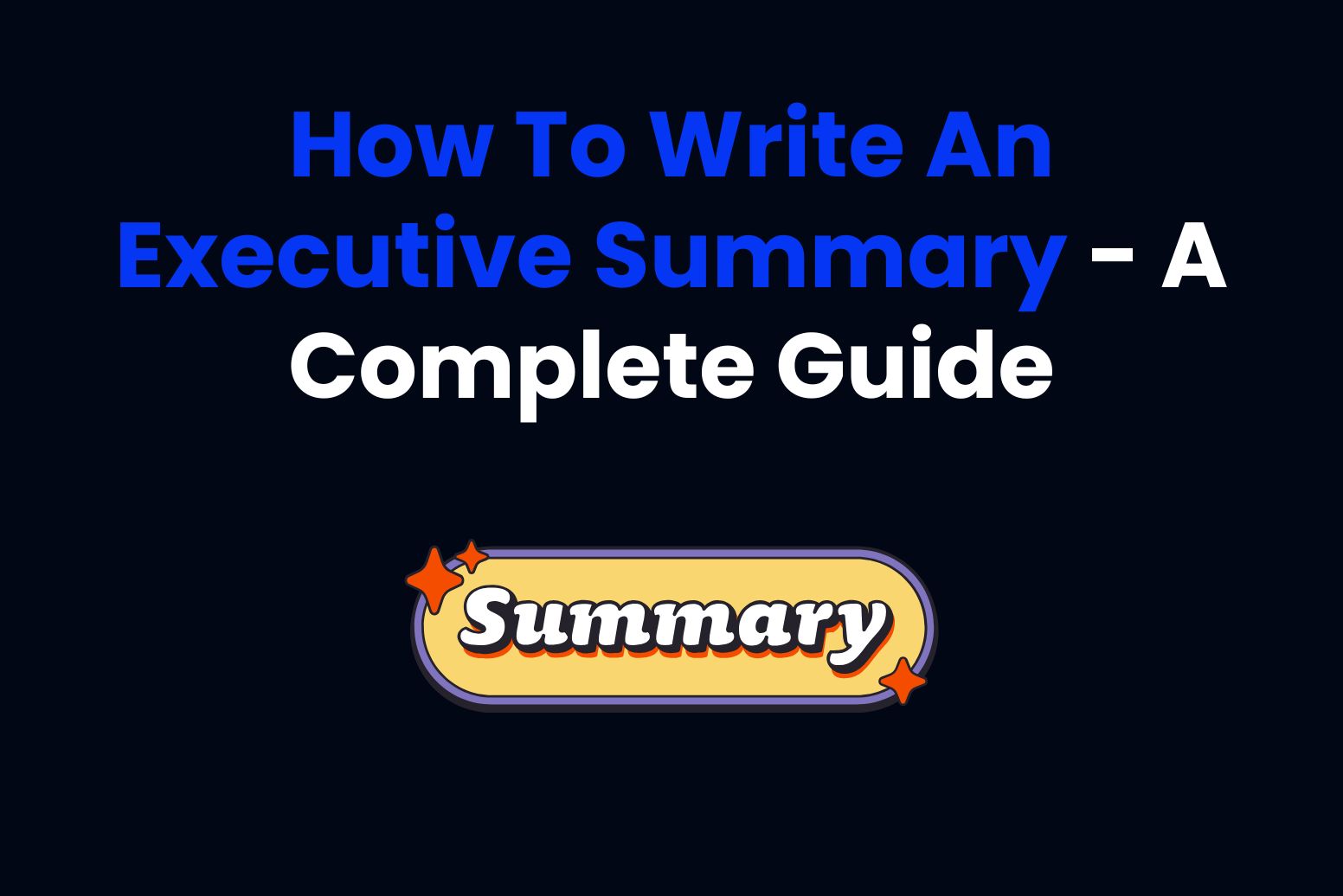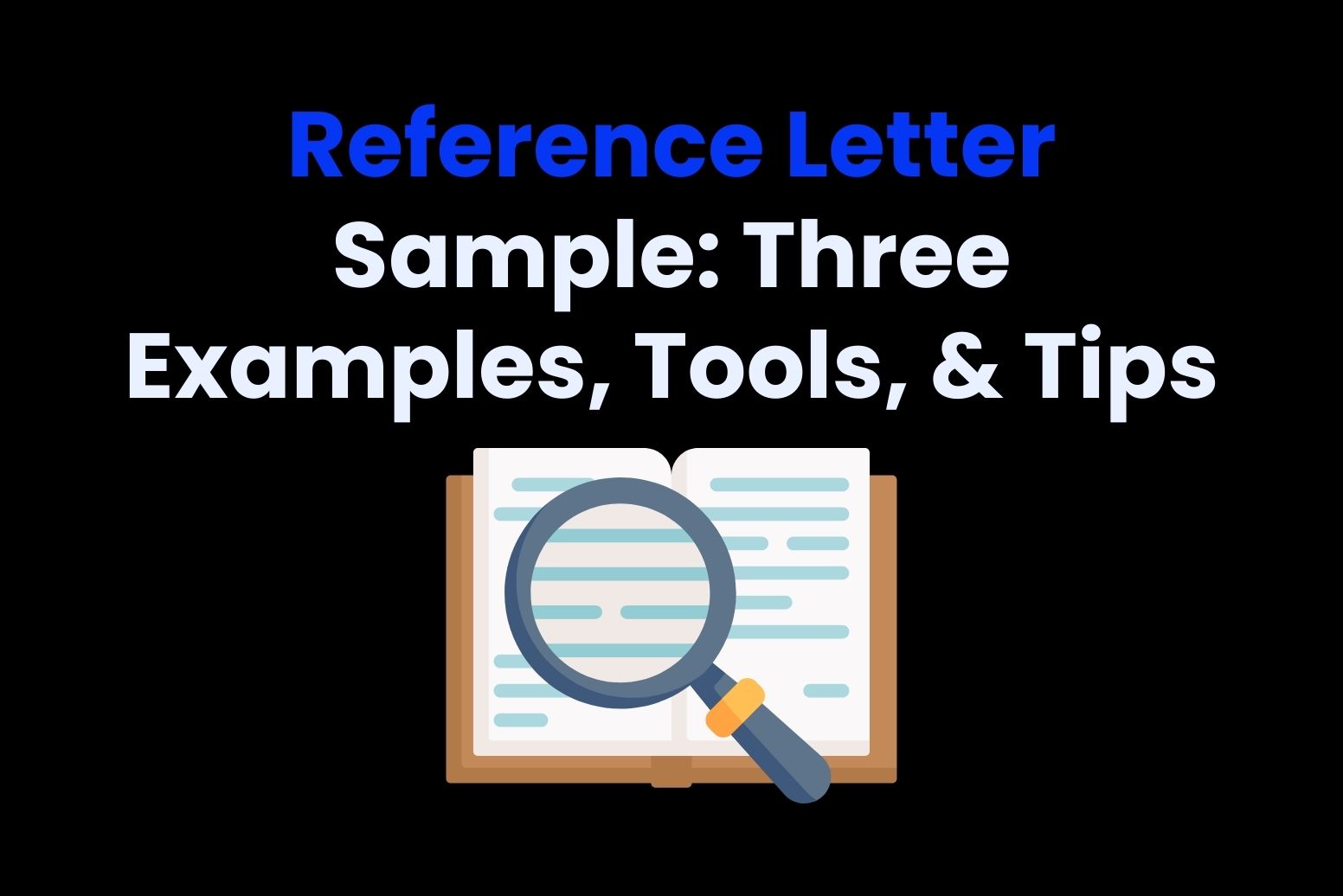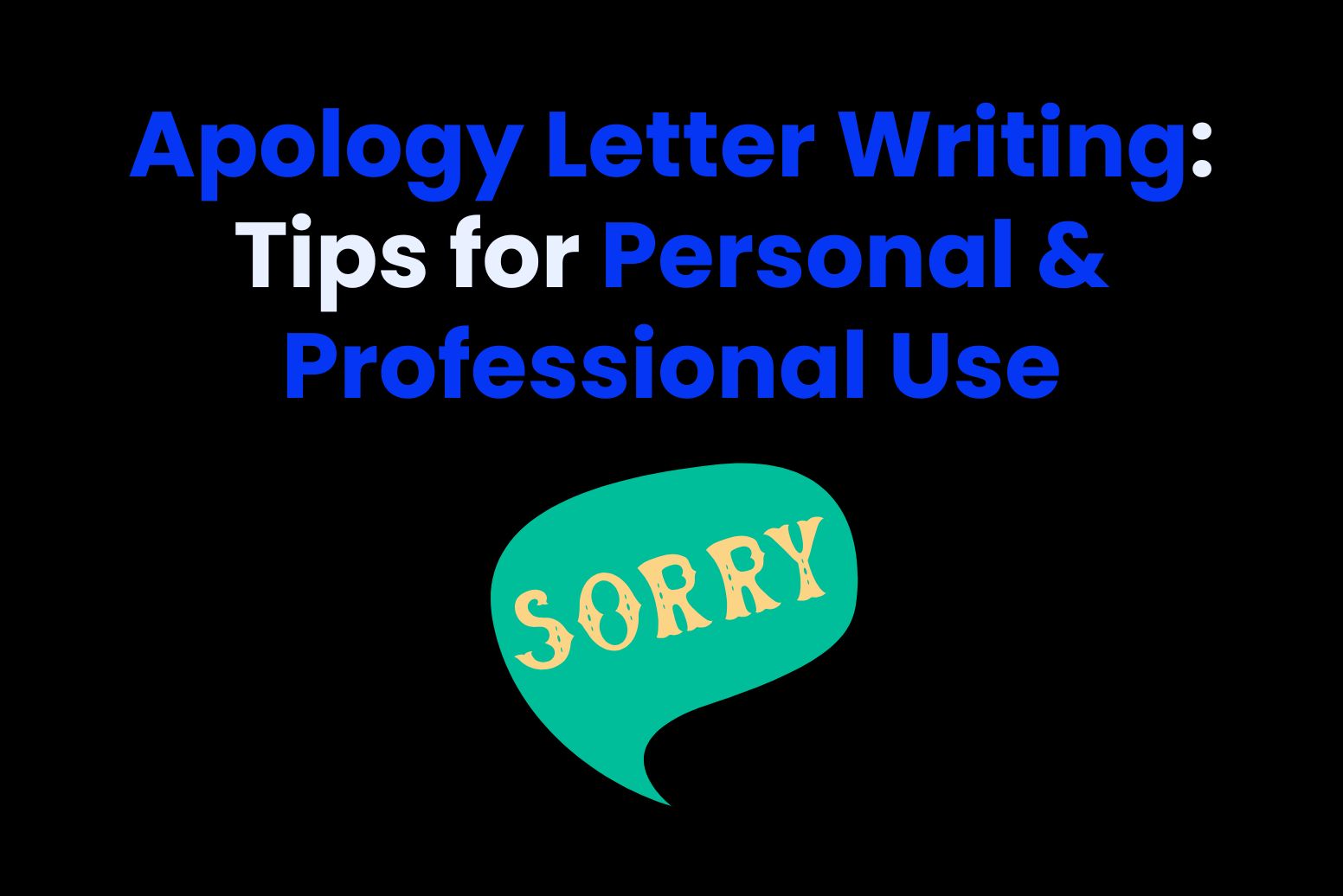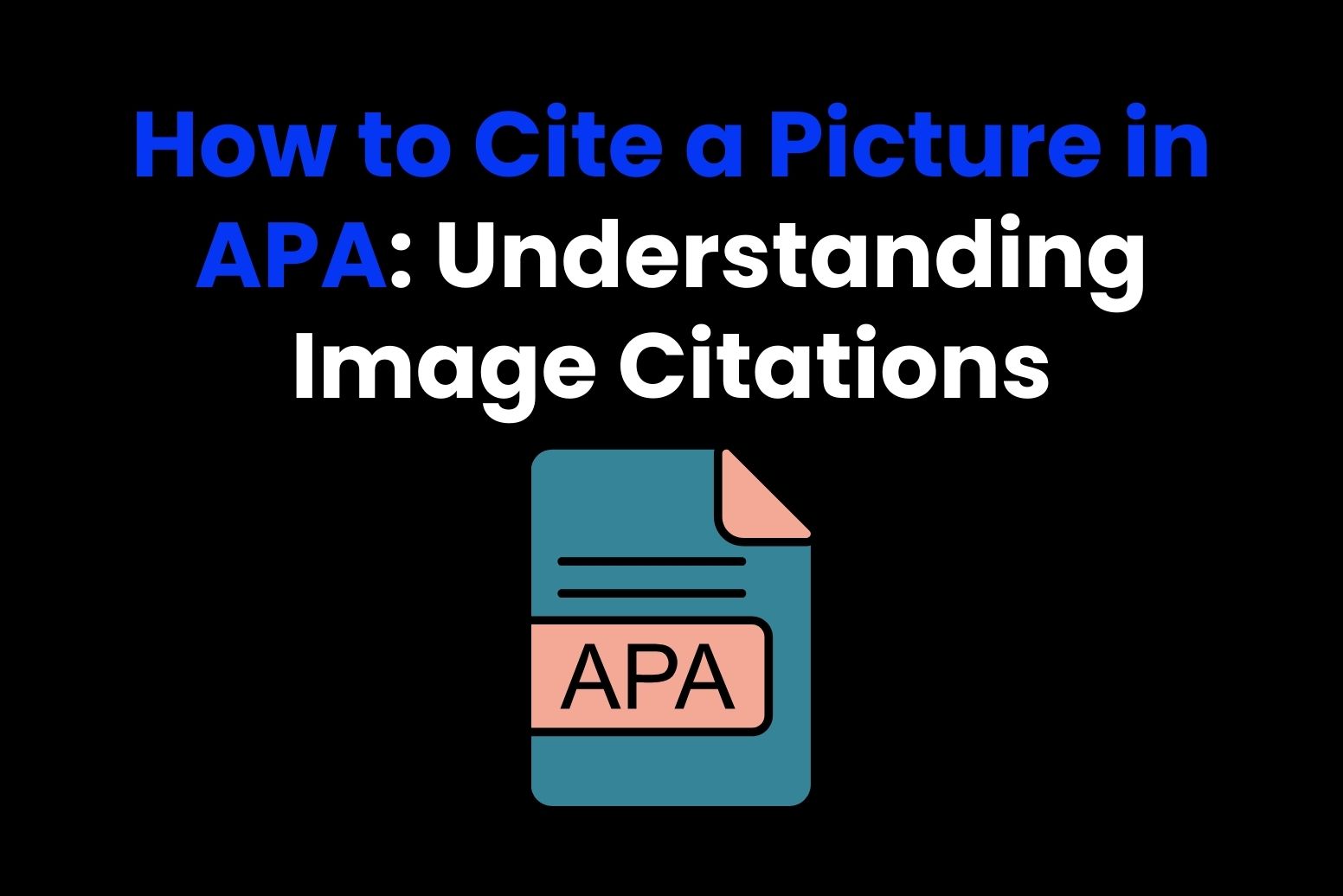Did you know that 55% of executives spend less than a minute reviewing a new document before deciding if it’s worth their time? This is why it is important to know how to write an executive summary that captures attention.
It’s your first and, often, only chance to impress busy stakeholders or executives who may not have time to read the entire proposal. So, how do you make it shine? In this article, we’ll break down how to write an executive summary that grabs attention, keeps readers engaged, and finally, drives action. Let’s dive into the details!
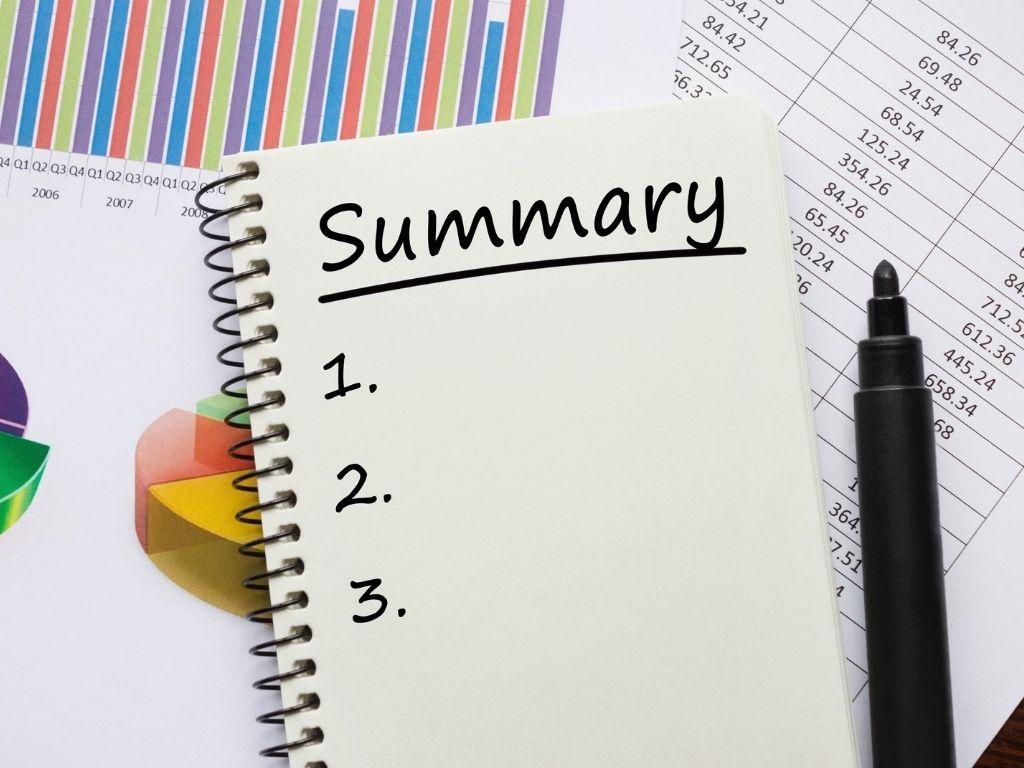
What Is An Executive Summary?
An executive summary is your document’s highlight reel. It is a concise overview that conveys the most critical points without overwhelming the reader. An executive summary is a standalone piece that tells your audience everything they need to know upfront.
For example, let’s say you’ve written a 40-page business plan detailing a new product launch. The executive summary would condense that into a one- to two-page overview. It is a roadmap for busy decision-makers, answering the big questions like:
- What’s the document about?
- Why does it matter?
- How should the reader act on it?
By the end of the executive summary, your audience should know exactly why they should care. They’ll be inspired to dig into the full document or act on your recommendations.
Why Is It Important To Know How To Write An Executive Summary?
If you’re wondering why you need to know how to write an executive summary, here’s why:
It Saves Time
Executives and stakeholders are notorious for their packed schedules. In fact, did you know research shows that most decision-makers spend less than two minutes reviewing a document before deciding whether to delve deeper? If you write an effective executive summary, it ensures they get the key points of your proposal in those crucial moments.
Let’s say you’re pitching a multimillion-dollar investment to a group of venture capitalists. They likely receive dozens of proposals every week. Your executive summary could be the difference between getting a callback or getting passed over. A quick, compelling summary saves time while ensuring your message doesn’t get lost.
It Drives Decision-Making
An executive will use a summary to make snap judgments about your proposal. Your summary will decide whether the executives will approve your funding or choose between competing priorities. You’re not just presenting information but you’re also delivering a solution or recommendation that guides action.
For example, instead of vaguely stating, “This report explores productivity improvements,” try this: “Our findings reveal that introducing flexible work schedules can increase team productivity by 18% within six months. This will result in $500,000 in cost savings.” See how this is actionable, data-driven, and designed to get the green light. That’s what you want for your executive summary!
It Establishes Credibility
Your summary is often the first thing stakeholders see. If it’s concise, polished, and packed with valuable insights, it immediately establishes you as a credible and competent professional. On the flip side, if it’s poorly written or lacks focus, it might raise doubts about the rest of your work, no matter how good it is.

What Is The Purpose Of An Executive Summary?
Let’s think of an executive summary as the ultimate cheat sheet for your document. Its purpose is to hook your audience, give them the key takeaways, and make them want to know more. Here’s what your executive summary should do:
Explain The Document’s Purpose
Why did you write this thing in the first place? Whether it’s a business plan, a project proposal, or a research report, your executive summary should spell out the “why” in one or two crystal-clear sentences. This will be the “what’s in it for me?” moment for your reader.
Highlight Critical Findings or Solutions
Got a jaw-dropping statistic? A groundbreaking solution? A game-changing idea? Drop it here. This section is all about delivering value upfront.
Example: Instead of saying, “We analyzed customer feedback,” say, “Our analysis revealed that 78% of customers would pay more for faster delivery options.” Isn’t that an instant intrigue boost?
Provide Actionable Takeaways
Nobody likes a cliffhanger, especially busy executives who have to read tens of proposals every single week. Wrap up your summary with a clear call to action or recommended steps. Should they approve funding? Schedule a meeting? Roll out a new strategy? Make it obvious and actionable. In simple words, try to make it as easy for them as you can!

Characteristics Of An Effective Executive Summary
Now that you know the purpose of understanding how to write an executive summary, how do you make it good? Here’s what separates an average summary from one that wows:
Keep It Clear And Concise
Nobody wants to read a summary longer than the document itself. So, try to stick to the essentials, strip away the fluff and focus on what truly matters.
Use Persuasive Language
Your executive summary isn’t just informative but think of it as a sales pitch. You’re convincing someone that your ideas are worth their time, money, or approval. Be confident and enthusiastic, but back it up with facts.
For Example: Instead of saying, “This might work,” say, “This strategy has the potential to increase market share by 20% in six months.” Conviction is key.
Focus On The Reader
Always remember who will be reading your summary before you begin writing it. If it’s a CEO, they care about the bottom-line impact of your proposal. If it’s a project manager, they’re looking for feasibility. So, figure out your audience and try to tailor your language and points to what matters most to them.
Step-by-Step Guide: How To Write An Executive Summary
Let’s walk you through how to craft an executive summary step by step:
Start With A Compelling Opening Statement
The first sentence of your executive summary is your chance to grab the attention of your audience and make the reader want more. Just like the headline of a news article, your executive summary should spark curiosity and set the tone. Here’s how you can ace your hook:
Use a Powerful Statistic:
Numbers have a way of pulling readers in, so use numbers in your hooks. For example: “Over 70% of executives admit they only skim reports. This summary ensures your key points aren’t overlooked.”

Pose A Provocative Question:
A question in your hook will engage the reader and make them think. Try something like: “What if you could increase revenue by 30% without adding any new staff?”
Highlight Urgency:
Show why this issue matters and why your reader should take action now. For instance: “As market trends shift rapidly, businesses must act fast to stay competitive. This summary shows how we can adapt.”
Examples:
- “In today’s competitive market, businesses that don’t innovate risk becoming irrelevant.”
- “This report lays out a plan to boost sales by 25% within 12 months.”
These statements are bold, relevant, and immediately frame what’s at stake or what’s to gain. They give your reader a reason to keep reading.
Summarize The Problem Or Objective
Before diving into the details, make it crystal clear what the document is addressing. A good problem statement is both specific and relatable. Here are the key components you must not miss:
- The Context: Briefly explain the background. Why is this issue relevant now?
- The Pain Point: What challenge is your audience facing? Be precise and relatable.
- The Stakes: Why does solving this matter? Highlight potential consequences if the problem isn’t addressed.
Weak Example: “This report looks at productivity issues.”
Strong Example: “This report examines how current remote work policies have caused a 15% drop in team productivity and offers solutions to reverse the trend.”
See the difference? The second example is precise and paints a picture of the problem. This way, the reader immediately understands why the issue matters and what the document is about.
Present The Key Findings Or Solution
This is the heart of your executive summary, where you’ll highlight the main points and recommendations that your document covers. Think of it as the big reveal for your summary. Here’s how to do it:
- Start with a brief overview of what you found.
- Illustrate your points with real-world scenarios, case studies, or hypothetical examples.
- Follow up with your solution or recommendations.
For example:
- “Our analysis found that shifting customer service to a chatbot system could reduce response times by 50%.”
- “We recommend investing in employee training programs to improve engagement and productivity.”
If you’ve got multiple findings, use bullet points or numbered lists to make them easy to digest.
Outline The Benefits And Impacts
Don’t just say what your solution is; instead, explain why it’s the best option and what benefits it offers. Focus on measurable outcomes whenever possible. Spell out exactly what your audience stands to gain and frame it in terms of their priorities, such as profit, efficiency, or competitive advantage.
Key Points To Include:
- Short-Term Benefits: What immediate improvements can the audience expect?
- Long-Term Impact: How will this solution pay off over time?
- Quantify the Value: Use numbers to show the impact in terms of revenue, cost savings, or time efficiency.
Example:
“By adopting this strategy, the company can save $250,000 annually on operational costs and streamline processes to cut project timelines by 15%. Over three years, these changes could result in a $1 million net gain.”

Conclude With A Strong Closing Statement
The ending is just as important as the opening. Wrap up your summary with a statement that leaves a lasting impression. Make it clear what action you want the reader to take next.
For Example:
- “This plan provides a roadmap to achieve our growth targets. Let’s discuss how we can start implementing it immediately.”
- “With these steps, we can improve efficiency and drive long-term success. I’m excited to collaborate on bringing this vision to life.”
Your closing should feel confident, forward-looking, and action-oriented.
Pro Tip: Always end your summary on a positive note and use forward-thinking language to inspire confidence.
Real-Life Examples Of How To Write An Executive Summary
Let’s talk about some real-life examples of executive summaries to help you understand how to write an executive summary:
Business Plan Executive Summary
Let’s write a business plan executive summary as an example and notice how it not only captures attention but also builds confidence:
“Do you want to wake up every morning to the rich aroma of freshly roasted coffee? And that too delivered straight to your doorstep? That’s the vision behind this premium coffee subscription service. We’re not just selling coffee but, in fact, delivering an experience that makes mornings smoother and more delicious.
Our business focuses on two key pillars: sustainability and convenience. Think ethically sourced beans, eco-friendly packaging, and a user-friendly subscription model that takes the guesswork out. We’re targeting coffee enthusiasts in metropolitan areas where people love their brew but don’t have the time to shop for it.
In our first year, we plan to collaborate with five top-notch speciality coffee roasters to create a unique lineup of blends. By year two, our strategy is to capture 15% of the premium coffee subscription market. This will eventually translate to $2 million in annual revenue. The best part? Our customers get a little slice of joy every morning, and we create a sustainable, scalable business that thrives on community and quality.”

Proposal Executive Summary
Here’s another example of how to write an executive summary that focuses on how to save costs using solar panels:
“Are your energy bills going through the roof? You’re not alone. Businesses everywhere are feeling the pinch, and that’s why this proposal focuses on a smart, sustainable solution: solar panels.
Here’s the deal: by installing solar panels at the company’s main office and warehouse, you could reduce energy costs by a whopping 20%. Our proposal includes a custom design for each building, a breakdown of the installation process, and detailed savings projections. Yes, there’s an upfront investment of $250,000, but the payback period is just five years. After that, it’s all savings. We’re talking $50,000 a year in reduced energy costs.
However, this isn’t just about cutting costs. It’s about aligning with the company’s sustainability goals, reducing your carbon footprint, and positioning your brand as a leader in environmental responsibility. This isn’t just an investment in solar panels, but it’s an investment in your company’s future and reputation.”
Common Mistakes To Avoid When Writing An Executive Summary
Now that you know how to write an executive summary, you must also know how not to write one. Even the best intentions can lead to blunders, so avoid these pitfalls to keep your executive summary on point:
Being Overly Detailed
Remember, you’re writing a summary and not the full story. Your reader doesn’t need to know how you crunched the numbers; they just need the result. Save the nitty-gritty for the main document.
Bad Example: “We used five different data collection methods, including surveys, interviews, and focus groups, to gather insights…”
Good Example: “Our research revealed three key trends driving customer behaviour.”
Skipping The Proofreading
A single typo can ruin your credibility faster than you can say, “Oops.” You’re writing an executive summary, and you need to be thoroughly professional. Always proofread, or better yet, have someone else take a look. Typos, grammar issues, or awkward phrasing will leave a bad impression. You can also use best free AI tools like the Arvin AI grammar checker to spot and remove any errors you may have missed:
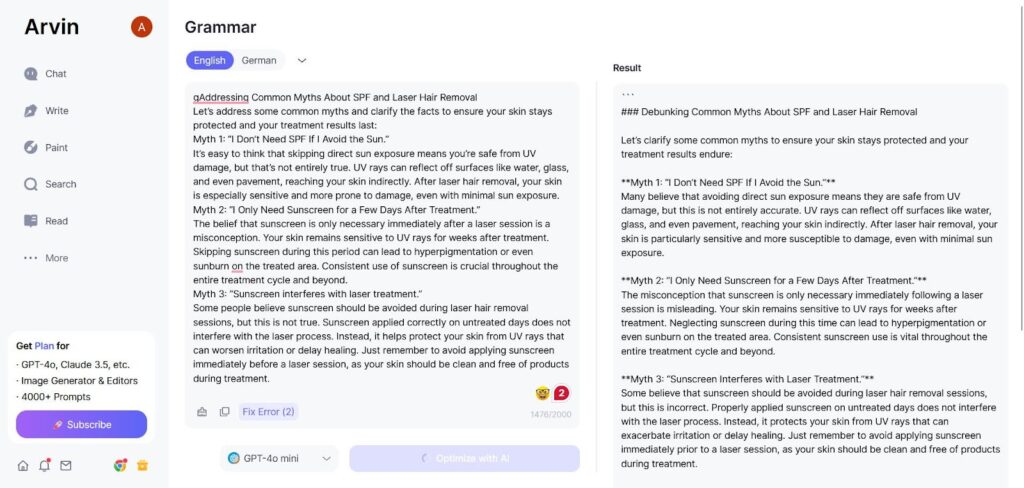
Using Jargon
Unless your audience speaks fluent “corporate buzzword,” try to keep it simple. Terms like “synergize” and “paradigm shift” might sound impressive, but they often confuse the reader more than they clarify.
So, instead of: “Leverage agile frameworks to maximize synergies,” say: “Use flexible strategies to improve teamwork and efficiency.” Clearer (and easier), right?
FAQS About How To Write An Executive Summary
Here are a few of the most frequently asked questions about how to write an executive summary:

What should be included in an executive summary?
An executive summary should cover the essential highlights of the document it represents, giving readers a quick and clear understanding of the key points. Here are a few writing strategies about what to include in an executive summary:
- Objective/Purpose: What is the document about? State the purpose clearly.
- Problem or Opportunity: Briefly explain the challenge or opportunity the document addresses.
- Key Findings or Results: Highlight the most important takeaways, such as research findings, project outcomes, or financial data.
- Proposed Solution or Recommendations: Summarize the action steps or strategies you’re suggesting.
- Benefits or Impact: Explain how the solution will address the problem and the advantages it offers (financial, operational, strategic, etc.).
- Call to Action/Next Steps: End with a clear call to action or the next steps the audience should take.
The goal is to provide enough information to engage the reader without overwhelming them.
How do you write an executive summary for a CEO?
When writing for a CEO, you need to be concise, direct, and results-focused. Here’s how to tailor your executive summary for this audience:
- Start Strong: Open with a compelling hook, such as a key statistic or a high-level summary of the opportunity or problem.
- Keep It Results-Oriented: Focus on outcomes and impact, like cost savings, revenue growth, or strategic advantages. CEOs care about the bottom line and big-picture goals.
- Cut the Fluff: Avoid excessive background details or explanations—stick to what matters most. Use clear, straightforward language.
- Organize for Easy Skimming: Use headings, bullet points, and short paragraphs to make it quick to read.
- Actionable Insights: Highlight what decisions or actions are needed and the expected outcomes of those actions.
- Professional Tone: While it can be conversational, maintain a polished, confident tone. CEOs need clarity and authority in your writing.
How long is an executive summary?
An executive summary should typically be 5-10% of the full document length. For most business plans, reports, or proposals, this translates to:
- 1-2 pages for shorter documents (10-20 pages).
- 2-3 pages for longer, detailed documents (30+ pages).
The key is to keep it concise while ensuring it’s comprehensive enough to stand alone. Additionally, avoid overwhelming the reader with too much detail, but don’t leave them guessing either.
What is an example of an executive summary that grabs attention?
To grab attention, you need to hook the reader fro m the very beginning. Start with a bold statement, a fascinating statistic, or a thought-provoking question. Here’s an example accordingly:
- “Did you know that companies implementing this strategy saw a 40% boost in productivity within six months?”
This immediately piques curiosity and sets the tone for your summary. In addition, follow up with a concise overview of what the reader can expect. Make it clear why the document matters and what value it brings to their role or business. Remember, the first few sentences are crucial so use them wisely.
Take Home Message
By starting with a compelling opening, clearly outlining the problem, presenting actionable solutions, and emphasizing benefits, you can craft an executive summary that grabs attention and drives decisions. Remember, the key to a great executive summary is clarity, precision, and tailoring it to your audience. If you ever find yourself stuck or unsure how to structure your executive summary, consider using an AI writing assistant like Arvin AI.
It can help you organize your ideas, refine your language, and ensure your summary is both professional and engaging. Additionally, you can save time and focus on the bigger picture while letting Arvin handle the heavy lifting. So, the next time you’re tasked with writing an executive summary, dive in with confidence, and don’t hesitate to seek a little AI-powered help when you need it!

